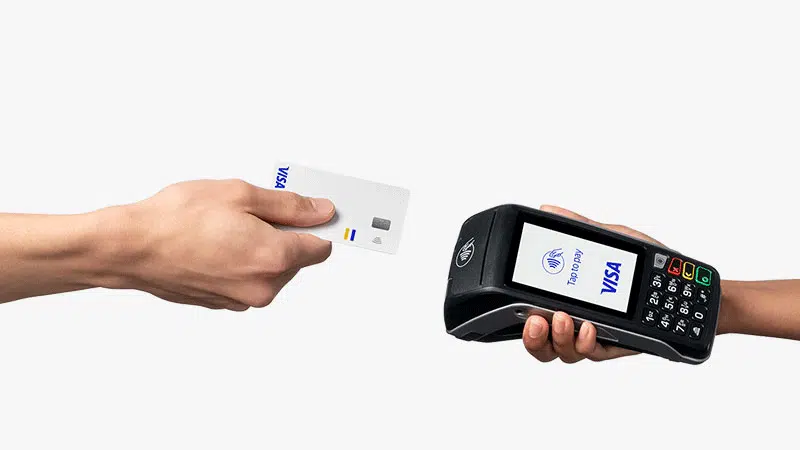Growth in contactless and peer-to-peer payments, e-commerce, and value-added services were among the highlights discussed with stock analysts late Tuesday during Visa Inc.’s third-quarter earnings call for the card company’s fiscal year 2024.
Visa’s Tap-to-Pay contactless payments technology has penetrated multiple markets, accounting for 80% of all face-to-face Visa transactions outside the United States, up more than four percentage points year-over-year.
In the U.S., Tap-to-Pay volume accounts for 50% of Visa’s face-to-face transactions. In New York City, Tap-to-Pay accounts for about 75% of these transactions, up from 50% two years ago, according to Visa. There are 30 U.S. cities above 60% penetration.

“The growth curve for Tap-to-Pay in the U.S. is maturing as expected,” Visa chief executive Ryan McInerney said during the earnings call.
Cross-border transactions through Visa Direct, Visa’s real-time P2P service, nearly doubled during the quarter compared to a year earlier, with Europe and the Central and Eastern Europe, Middle East, and Africa region generating the most volume.
In e-commerce, Visa surpassed issuance of 10 billion e-commerce tokens during the quarter, a “significant milestone” McInerney said. In 2023, Visa tokens helped generate an estimated $40 billion in incremental e-commerce volume for merchants globally, while saving them more than $600 million in fraud globally.
Value-added services posted revenues of $2.2 billion in constant dollars during the quarter, a 23% year-over-year increase. In fiscal 2024, value-added services accounted for $7 billion in revenue, up from $6 billion in 2023 and $5 billion in 2021.
“What we have shown is consistent growth quarter after quarter and year after, and we are super optimistic about where we go from here,” McInerney told analysts.
Areas where Visa is growing its value-added services include risk-management and dispute-resolution products that enhance Visa transactions, such as Visa Secure and Visa Online, respectively, according to the company.
Now, McInerney said, Visa sees an opportunity to expand its value-added services beyond non-Visa transactions, such as extending its risk-management technology to the RTP network operated by The Clearing House Payments Co. LLC, as well as account-to-account services. Expanding value-added services beyond payment and consulting will be a focus for Visa going forward, said McInerney.
Payment volume for the quarter grew 7% year-over-year in constant dollars globally, while payment volume in the U.S. grew 6% in constant dollars during the same period. Cross-border payments grew 14% in constant dollars globally.
When asked by equity analysts how the rejected settlement in the decades-old interchange lawsuit with merchants may affect future interchange rates and revenues, McInerney confined his remarks to Visa’s official position about the ruling, which was handed down in late June.
“We strongly disagree with the judge’s decision and feel the settlement was fair and provided meaningful relief to all merchants,” McInerney said. “The decision failed to take into consideration a number of things, especially the complex, multi-sided ecosystem we operate in,” and the complicated role of the many players in that ecosystem.
While Visa is pursuing a new settlement, “a settlement can happen at any point before, during, and even after the trial, so keep that in mind as the process plays out,” McInerney added.





